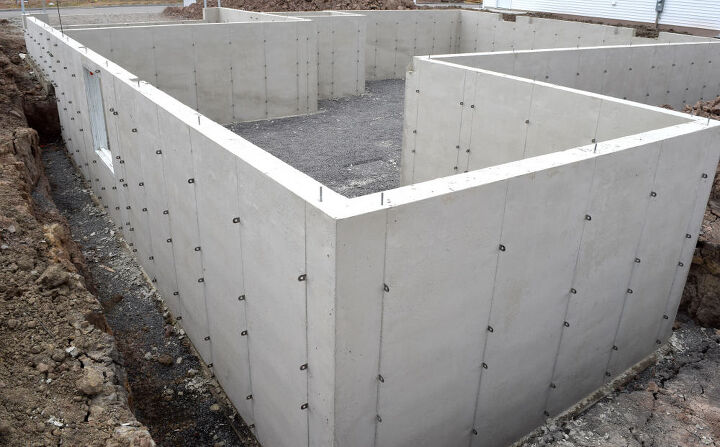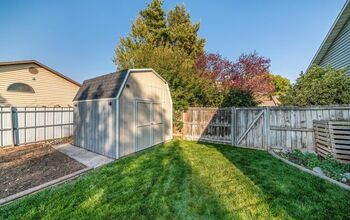Is It Possible To Build A Basement Under An Existing Home?

When you are ready to enjoy more living or storage space in your home, there are a few options that are available to you. You can either build up, sideways, or down. Building an additional story onto the top of a house or an extra room off to the side can certainly improve a home. Adding a basement, however, can be one of the best things that you can do to a home, if you do it correctly.
It is possible to build a basement under an existing home if you lift the house and excavate beneath it. You need to install a new foundation, walls, insulation, and drainage. Homeowners must hire a contractor to build a basement under an existing home, and it costs an average of $125,000.
Do You Need an Addition or Remodel Contractor?
Get free, zero-commitment quotes from pro contractors near you.

Is Building a Basement Under an Existing House a Good Idea?
Before getting started with a project of this magnitude, it is always a good idea to ask yourself if the project is worth the time and money that will go into it. For some, it is well worth it and for others not so much. It all depends on your vision and unique circumstance.
Addons of all sorts have their pros and cons and that is also true with basement additions. Basement additions can be quite costly, running anywhere from around $50,000 to $200,000 depending on the size and complexity of the project.
Building a basement under a house also comes with a fair amount of risk which some may be averse to.
Cost vs. Property Value
One of the main reasons that many may have to reconsider a basement build under an existing house is the fact that a basement is not likely to raise the property value high enough to balance the cost of the project.
While this is not a huge concern for anyone looking to remain in a property for a very long time, it does become an area of concern for anyone looking to resell the house in the future. The question as to how ‘worth it’ a basement addition often comes down to how much the new living space will positively impact one’s life.
Underpin a Basement
To provide ample support to the structure of the house, one method commonly used is underpinning. Underpinning is a process that allows builders to create a series of columns within a basement area that work together to create a support system for the house.
To prepare the site for underpinning, a series of holes are dug into the earth beneath the house. The holes go as deep as the future basement will be.
Each of the holes are prepared with wire rebar which helps offer support and strength to the columns that will be installed.
When everything is prepared, the columns are inserted into the holes directly under the load-bearing walls of the structure. Concrete is then poured into the holes to secure the ‘pins’ in place. With the house properly secured and supported, digging can commence.
Digging Out the Basement
To dig out the basement, there are a couple of different options. While some people may choose to dig a basement out by hand, that is something that we cannot recommend. The work is hard and the chances of running into large rocks and other obstacles make doing the work by hand extremely difficult.
If there is enough space, it is sometimes possible to employ the use of a backhoe. As with any large machinery, however, using a vehicle to help you dog out the dirt requires plenty of space and access for the vehicle to do its work.
Unfortunately, many people who are looking to build a basement under an existing house do not live in a place that will allow for large equipment. In that case, using a conveyor belt system with and smaller digging tools can suffice.
Video: Convert Crawlspace To Basement
Walls and Foundation
With the house successfully supported by underpinning, and after all the excess dirt has been removed, the walls and foundation must be poured.
The walls should be as thick or thicker than the walls (above) that they will support, and the slab beneath should be tied into the pins and walls.
There are numerous details to take into account when pouring a new foundation. Plumbing, drainage, and insulation, to name but a few.
Waterproofing
Waterproofing is another essential step in constructing a basement. This step needs to be planned along with the walls and base layer. The waterproofing membrane wraps along the outer layer of the walls and under the floor. There are a few different ways to waterproof a basement but the most common is a waterproof wrap.
Drainage
Drainage is another important factor in building a finished basement. You might be looking to put a bathroom, or a washing machine into the basement. Or perhaps you just want to make sure that the basement never floods.
Whatever type of use you have planned for your basement, installing the right kind of drainage system is crucial. The most common options for basement drainage are sump pumps, septic tanks, or a direct link to the municipal sewer system. Your choice will likely be affected by the location of the house.
Insulation
As with waterproofing and drainage, insulation is yet another important step in the process. The interior side of the concrete walls are often insulated with a think layer of insulation. The ceiling, however, is where the main concentration lies.
Once the basement is near complete, the entire ceiling should be insulated before the drywall is installed. Not only will this keep the temperature of the house regulated, but it will also provide a sound dampening effect.
Related Questions
Can you dig out a crawl space to make a basement?
Yes, you can dig out a crawl space to make a basement. There are some reasons that you may wish to avoid the project, however. The first of which concerns property value and cost of digging a basement. The project is likely to cost considerably more than the price hike will be for the home once the new basement is complete.Another thing to consider is the complexity of the project. To make a basement under an existing house, you will have to jack up the house and pour new foundation walls which is a process that must be carried out very carefully.
Do You Need an Addition or Remodel Contractor?
Get free, zero-commitment quotes from pro contractors near you.

Whether you have a crawl space or a basement that could benefit from higher ceilings, digging a basement deeper can improve your home in a variety of ways. The costs associated with digging a basement deeper depend on many factors but a range of $50,000 and $200,000 can be expected.

Benjamin is a proud homeowner who loves to write about DIY projects and home improvement projects. Traveling, perfecting his home, and spending time with his family are just a few of the many things that keep him inspired.
More by Benjamin Wright













![10 Best Cordless Leaf Blowers – [2022 Reviews & Ultimate Guide]](https://cdn-fastly.upgradedhome.com/media/2023/07/31/9070789/10-best-cordless-leaf-blowers-2022-reviews-ultimate-guide.jpg?size=350x220)













